In the automotive industry’s earliest days, luxury car makers produced only the mechanical components (engine, transmission, chassis and so on) known as a rolling chassis, which underpinned the car. The bodies were designed and constructed by independent coachbuilders to the customer’s specification.
For manufacturers, including Rolls-Royce, improvements in design and engineering were directed almost entirely towards technical aspects of the car’s performance. These included reliability, hill-climbing capability, ease of control and a set of ride quality attributes still known collectively as noise, vibration and harshness (NVH).
From the outset, Phantom earned the title ‘the best car in the world’ through the superior quality and designs of the rolling chassis – the finest platform on which coachbuilders could reach the very apex of their craft.
The Phantom family was born in 1925 when Rolls-Royce launched Phantom I. With its massive low-range torque, cutting-edge technology and ‘Magic Carpet Ride’, the new model immediately established the fundamental traits that would define the family for the next 100 years. Then, as now, Rolls-Royce declined to rest on its laurels, and by 1929, its successor was ready for the market.
Rolls-Royce Phantom I, 1925–1931
Rolls-Royce Phantom II, 1929–1935
Rolls-Royce Phantom III, 1936–1939
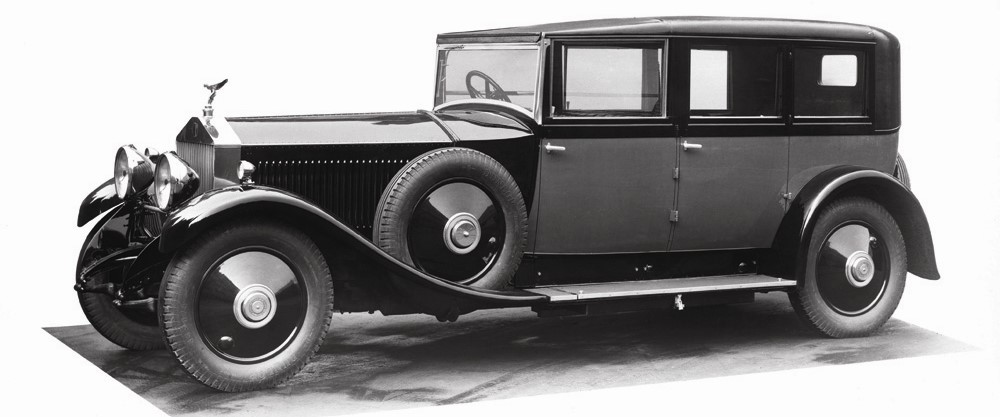
In 1925 the Silver Ghost was replaced by the “New Phantom”, which was later known as Phantom I. The last batch of Silver Ghosts was built in 1927 as armoured car chassis for the Russian Trade Delegation “ARCOS”. The Phantom was built both in the UK and in a new factory in Springfield, Massachusetts.
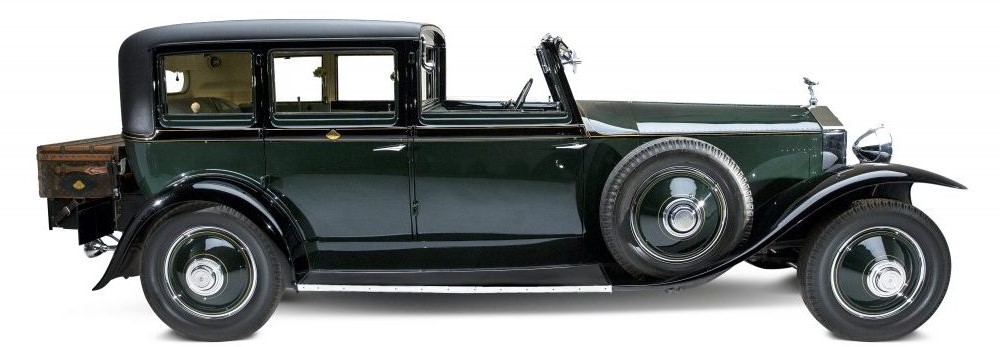
COACHWORK BY HOOPER OF LONDON AND INSKIP OF NEW YORK
THE FRED ASTAIRE PHANTOM I
Developed in great secrecy, Phantom I was revealed in 1925 and proved an instant success. With its all-new 7.6-litre, straight-six engine, Phantom eclipsed all rivals for speed, power and reliability, and immediately secured its status as ‘The Best Car in the World’. This priceless example, on loan to the Exhibition from the Petersen Automotive Museum in Los Angeles, was originally owned by the American dancer, singer and actor Fred Astaire (1899-1987). Coachbuilders, Inskip of New York, added bespoke door handles, rear indicators and other features inspired by the Art Deco style, while the motoring trunk, an extremely rare piece handmade by Louis Vuitton, contained Fred’s trademark top hat, white bow tie and dancing shoes.
In a career spanning seven decades and more than 30 films, Astaire became one of Hollywood’s most beloved and enduring stars. As a dancer, notably with partner Ginger Rogers, Astaire achieved a grace and perfection that changed musical cinema – just as Phantom would became the standard by which all other motor cars were judged.
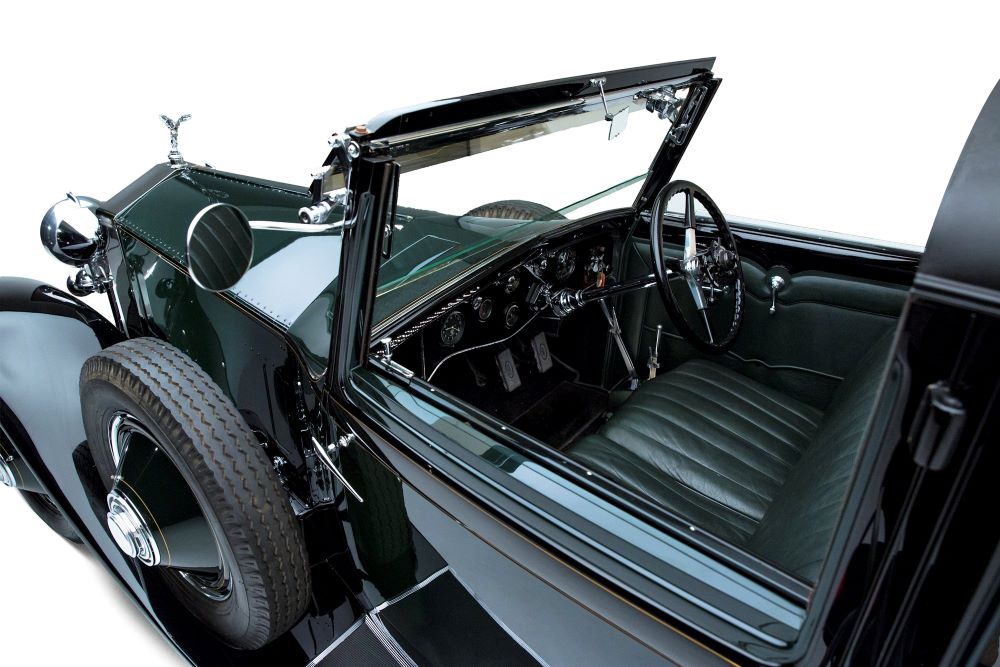
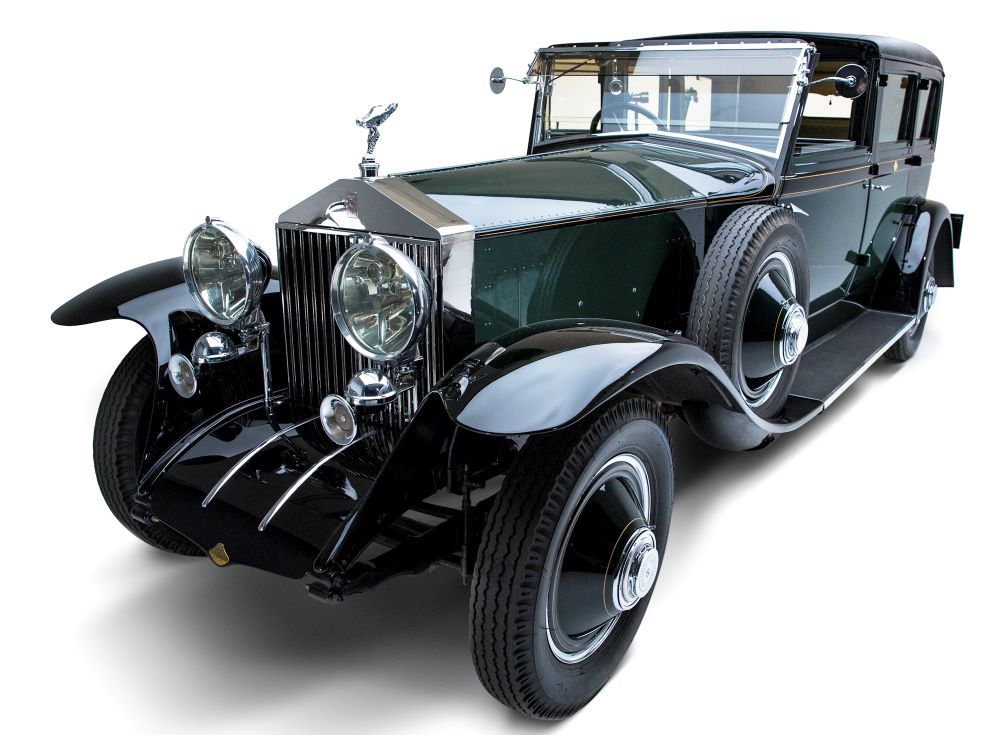
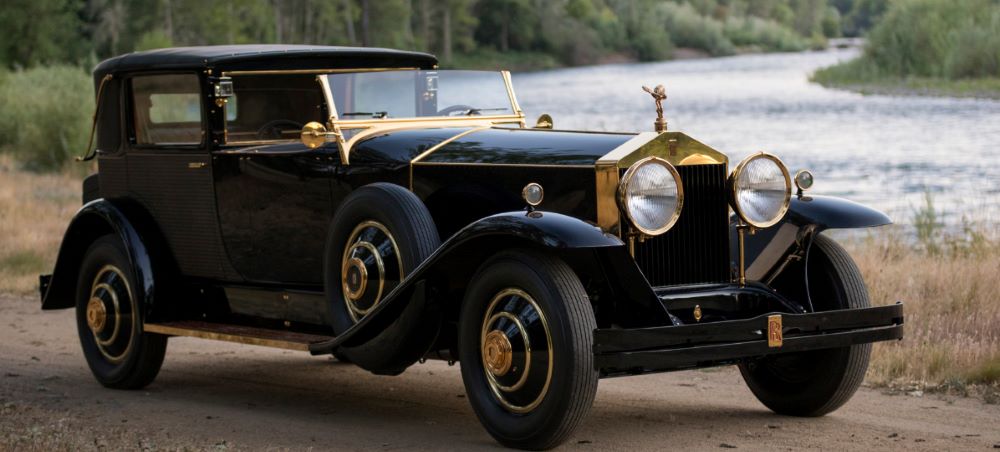
1929 Rolls-Royce Phantom I Brewster ‘Golden Riviera’
All Rolls-Royces are special, but some are totally unique. This example may be one of ten Riviera Phantom I cars built, but it’s the only example specified by its owner with gold-plated exterior trim as far as the eye could see. Bought by Irene Schoelkopf Carman in 1929, it also comes fitted with a few of her other ‘optional extras’, including a Dunhill lighter, an intercom for communicating with the driver and a mirror pad.
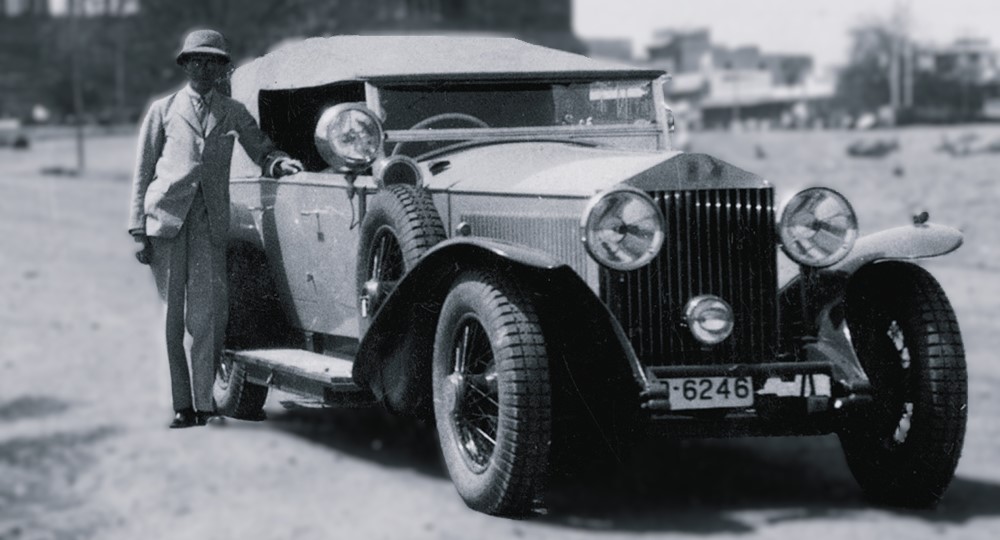
The Phantom family was born in 1925 when Rolls-Royce launched Phantom I. With its massive low-range torque, cutting-edge technology and ‘Magic Carpet Ride’, the new model immediately established the fundamental traits that would define the family for the next 100 years. Then, as now, Rolls-Royce declined to rest on its laurels, and by 1929, its successor was ready for the market.
Phantom II represented another step-change in engineering and technology. In 1930, the company unveiled the Phantom II Continental, which gave customers a choice of a more performance-orientated model for those who preferred to drive themselves. The ‘standard’ longer-wheelbase car was retained for chauffeur-driven use. This practice set the precedent for today’s Phantom and Phantom Extended.
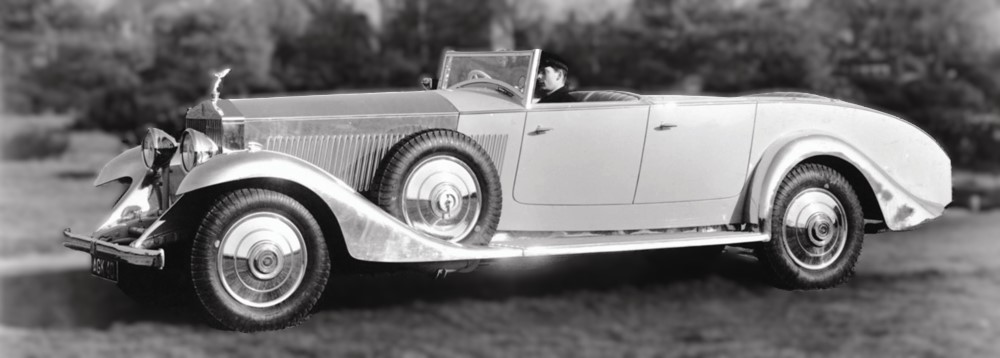
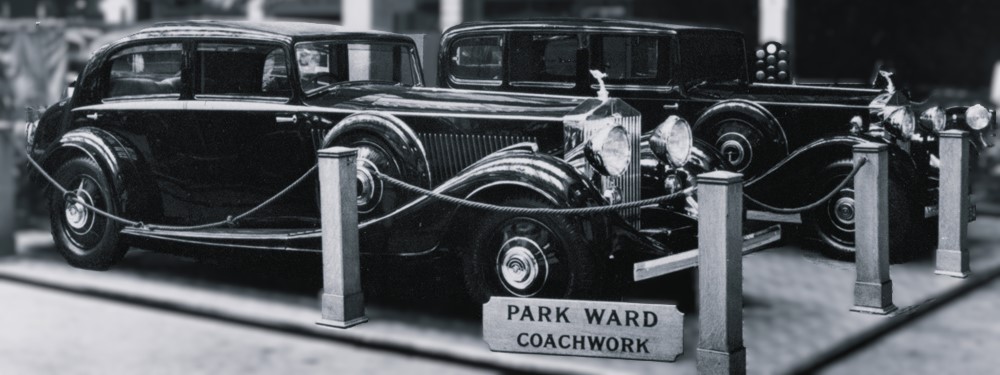

The Phantom II had a much-improved chassis, which made it the ideal choice for those who thought nothing of finishing work on a Friday and heading down to the South of France for the weekend. Better-known body styles were the Barker close-coupled touring saloon; Park Ward Continental coupe and Barker torpedo tourer. The Park Ward Continental would do 92.3 mph and 0-60 in 19.4 seconds.

1930 Phantom II (62GY)
This handsome Phantom II was coachbuilt by Hooper of London with a Dual Cowl Tourer body. At the request of the owner, a wealthy timber merchant from Texas, 50 additions were specified with touring intentions. These include a larger fuel tank, louvered bonnet and radiator two inches taller than standard. The car was originally purchased for the owner’s honeymoon and went on to tour the Continent extensively until 1939. The present custodian acquired the car in 1998 and has since won prestigious awards including the Louis Vuitton Classic Parfums Givenchy Trophy pre-war tourers and Most Sporting Tourer in the Biarritz Concours.
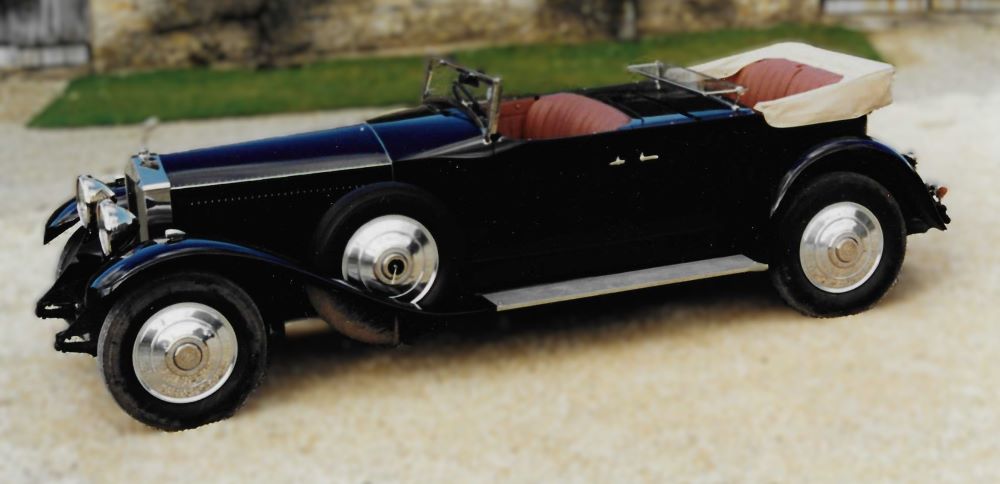
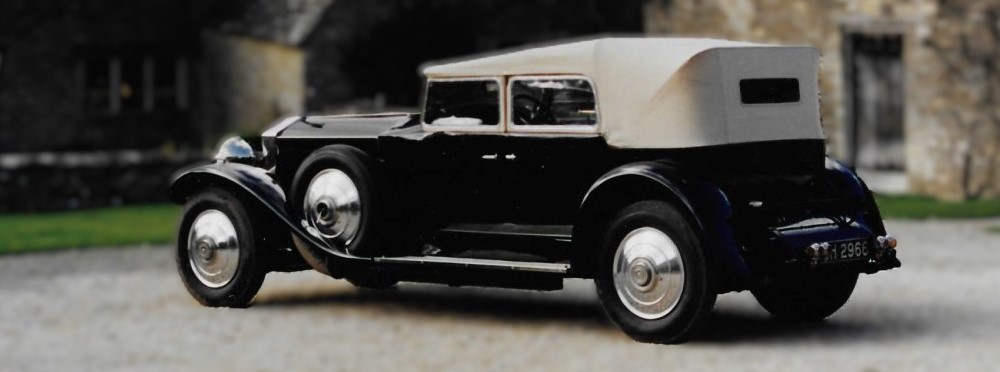
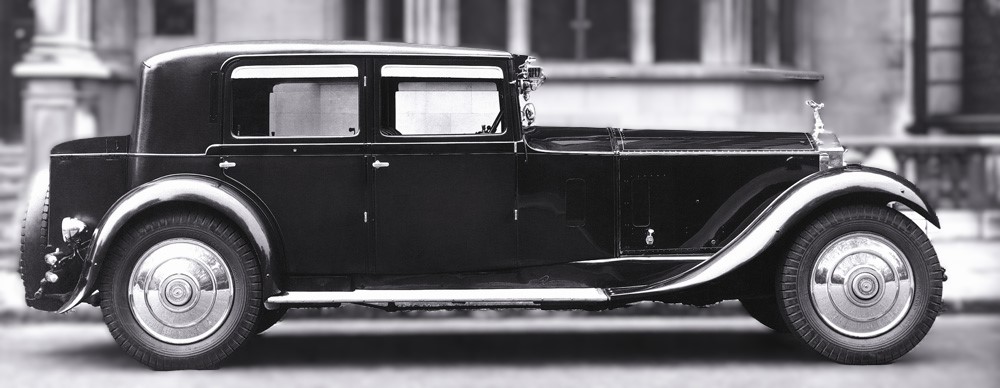
A direct descendent of the Silver Ghost, the Rolls-Royce Phantom I was launched in May 1925. Sir Henry Royce felt that the Silver Ghost chassis was adequately robust and could not be persuaded that the company needed an entirely new chassis. Compromising, engineers at Rolls-Royce, through a process of careful technical advancement, managed to notably improve the old chassis. This reflected Henry Royce’s personal belief in evolution rather than revolution when it came to improvements.
The Phantom I, as impressive as it was, due to ever increasing competition from the United States, was soon in need of a successor. Accordingly, Rolls-Royce made the announcement in September 1929 that the Phantom I chassis would be discontinued. The following month at the London Olympia Motor Show Rolls-Royce debuted its latest chassis, the Phantom II.
It was no surprise that the chassis of the Phantom II was very similar to that of the Silver Ghost and the Phantom I. The Phantom II’s four-speed transmission, although similar to its predecessor, through a series of innovations was both quieter and smoother in operation. Other improvements found on the Phantom II included the use of semi-elliptic springs for the front axle, and an underslung design for the rear. The new spring design, when combined with the PII’s new lower frame reduced the height of the car in the order of nine inches.
Phantom II production spanned a relatively brief amount of time, only six years between 1929 and 1935. In all, approximately 1,681 examples of the PII were produced. With the customer’s choice of coachwork from one of Europe’s leading firms, each individual Rolls-Royce was highly distinctive and often tailor-made to the buyer.
The 1930 Rolls-Royce Phantom II Sports Saloon pictured here features custom coachwork by one of the most respected coachbuilding firms in England, H.J. Mulliner. Both H.J. Mulliner’s proximity to Rolls-Royce and their outstanding designs of uncompromised quality resulted in a considerable number of Rolls-Royces built between the two World Wars wearing H.J. Mulliner coachwork.
The Sports Saloon, in addition to having unique running boards and fenders, displays a very nice restoration and a very attractive light gray leather interior. The brightwork appears very presentable, as does the dashboard and gauges, all of which indicate a high level of craftsmanship and a pronounced attention to detail during the restoration process.
Finished in a very handsome shade of blue with white striping, matched wheel discs and sidemount spares, the stately Rolls-Royce offered here displays the classic Rolls-Royce elegance one would expect. Overall a very lovely example, the Phantom II will undoubtedly prove to be a delight for its next owner and lucky passengers.
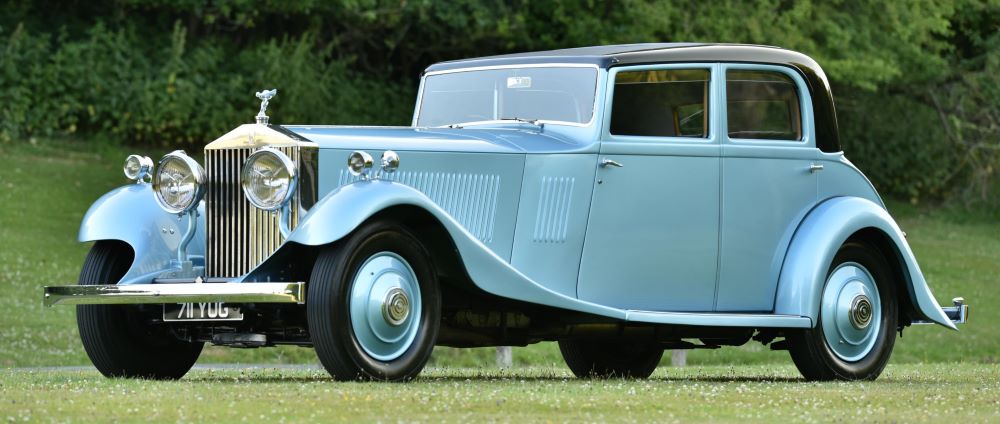
1933 Rolls Royce Phantom II Continental 711YUG
MALCOLM CAMPBELL PHANTOM II – 1933 ROLLS-ROYCE 40/50HP PHANTOM II CONTINENTAL TOURING SALOON COACHWORK BY BARKER & CO.
At the height of his pursuit of a new land speed record in the 1930’s, Sir Malcolm Campbell began a relationship with Rolls-Royce that would take him to glory and help him celebrate it.
At the end of 1932 Campbell had won prestigious Grand Prix races, broken the land speed world record not once but six times, and had been knighted by King George V. He had nothing left to prove. He was the fastest man on land and yet, as restless as ever, he wanted to take a crack at the 300mph barrier, the automotive equivalent of the four-minute mile. He believed that the only engine that could power his Blue Bird to this speed was a 36.5L Rolls-Royce R aero engine, which generated a staggering 2,300 horsepower.
On 22 February 1933, Blue Bird’s first run with the Rolls-Royce engine set a new world land speed record of 272 miles per hour (438 km/h) at Daytona Beach, Florida. A month later, Campbell celebrated by taking personal delivery of a new Phantom II Continental, registration AGO 1.
The short-wheelbase Continental had been introduced in 1930 as a ‘sportier’ version of the Phantom II, which had debuted a year earlier. The Continental, with its improved balance and springing, was capable of 95mph – modest by Campbell’s standards, but positively head-spinning for a car weighing almost two and a half tons.
The Motor magazine commented that the Phantom II Continental was ‘Powerful, docile, delightfully easy to control and a thoroughbred, it behaves in a manner which is difficult to convey without seeming to over-praise.”
Although AGO 1 was bodied by coachbuilders Barker as a ‘standardised touring saloon’, there were some Bespoke modifications ordered by Campbell. These included a wireless set, fire extinguisher, spotlight, an exhaust pipe specified as nine-inches longer than the norm (probably to create an exhaust note closer to the Blue Bird’s roar), a klaxon horn, a Bosch horn and a siren. Clearly this king of speed wanted people to know he was coming through! Even on public roads, Campbell’s fondness for going fast was well known.
And the colour? Pale blue, of course, with darker blue leather trim and a black roof. The pearlescent glow of the bodywork was apparently achieved by Rolls-Royce’s use of ground herring scales in the paint. Campbell must have been pleased, for he penned a promotional brochure for the Phantom II entitled ‘The best Rolls-Royce yet produced,’

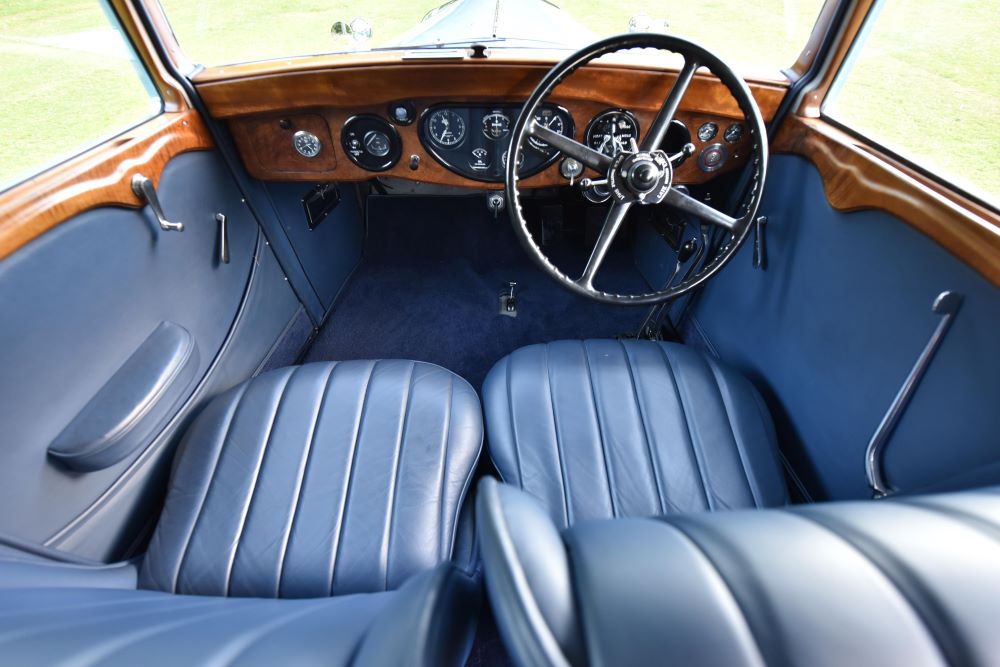

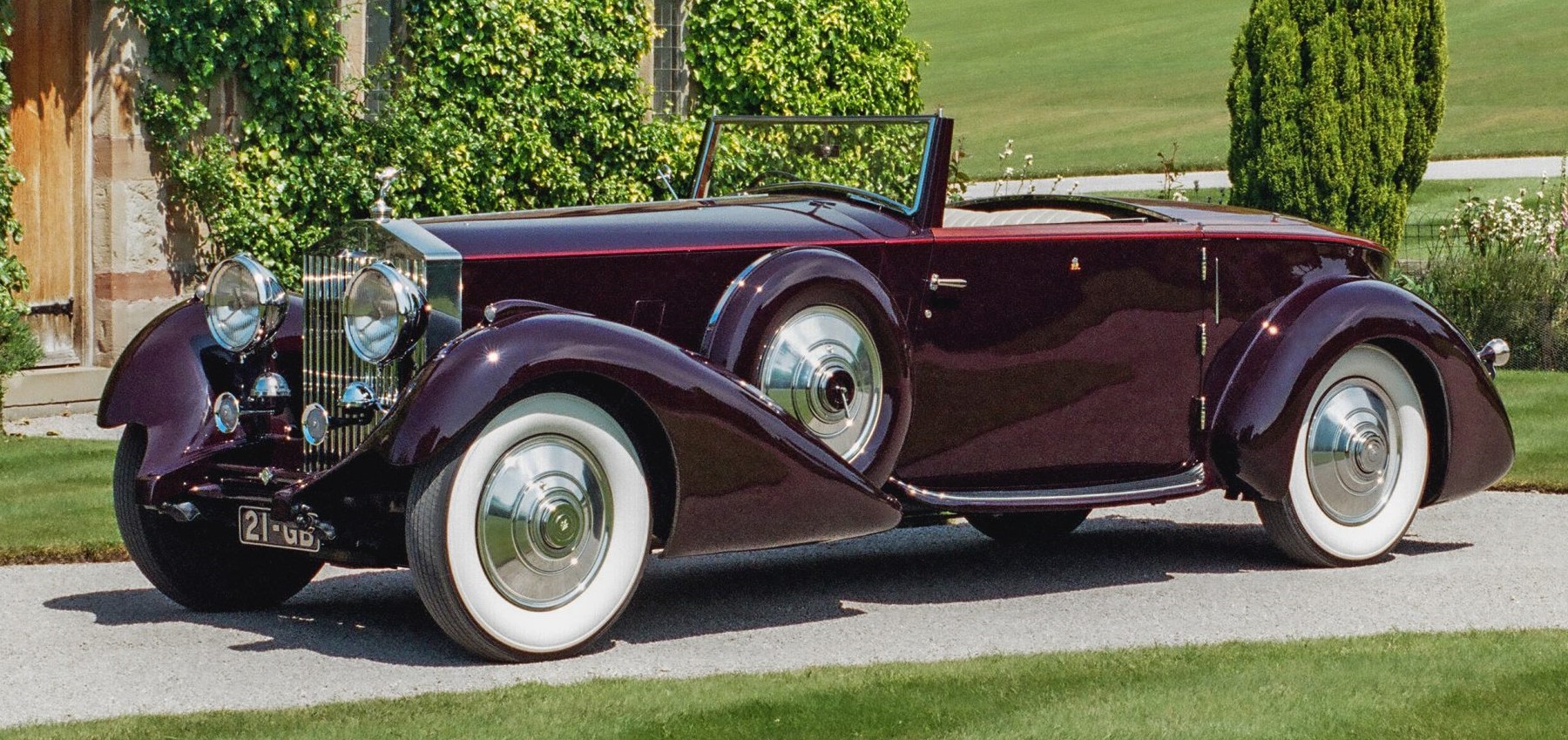
Phantom II Continental Drophead Coupé (1934)
Co-creation has always been at the heart of coachbuilding. Having commissioned a design for his or her perfect motor car, the customer worked with the designers and manufacturing specialists to produce a final design that was technically achievable. The coachwork would then be completed to the customer’s satisfaction.
This 1934 Phantom II Continental Drophead Coupé, designed by A F McNeil and built in London by Gurney Nutting & Co, is considered one of the most exotic and beautifully balanced examples of boat-tail coachwork ever created. The sweeping concave curves at the rear rise upwards to the razor-edging of the varnished rear decking. A design that has stood the test of time well, it remains a fine example of sporting elegance.
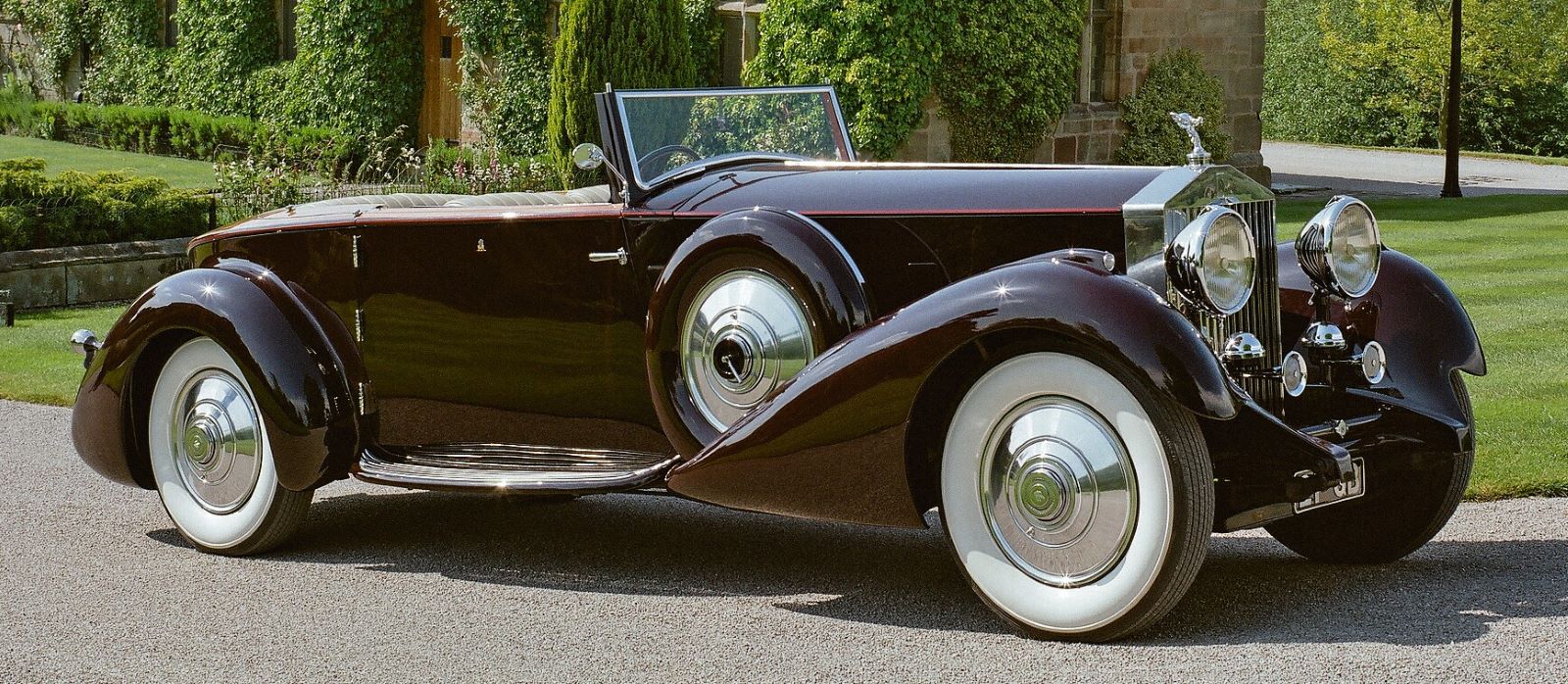

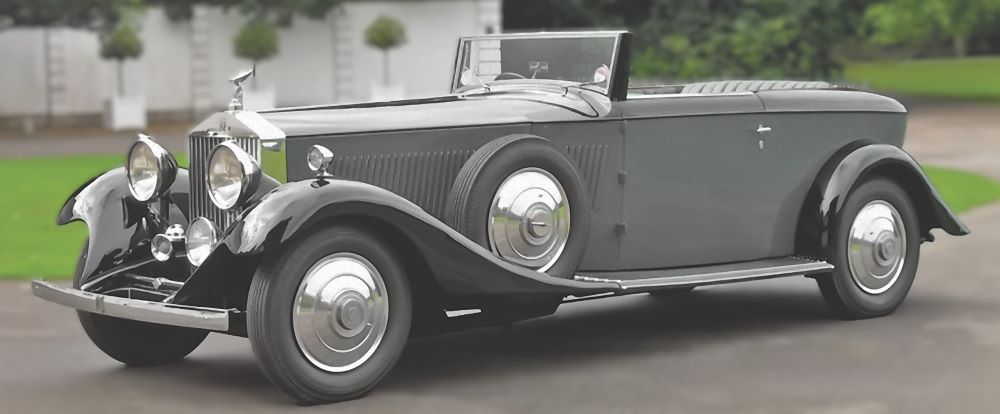
1933 Phantom II Continental (55MW)
This ‘concealed-head boat body’ was a speciality of coachbuilder Park Ward. Its main feature was the compact folding hood that, when fully retracted, was entirely concealed under the rear deck, giving the coachwork its distinctive uninterrupted line. The upholstery was textured pigskin.

While the new Continental could attain speeds up to 95mph, it was still not as fast as some of its rivals. The company decided to resolve the matter once and for all. In 1934, applying its proven experience with aero engines, it developed a new 7.3-litre V12 engine, mounted on a new chassis. The resulting Phantom III, when fitted with lightweight coachwork, was capable of exceeding 100mph.
In 1939, Rolls-Royce produced an experimental car, nicknamed ‘The Scalded Cat’. In later years, this car was often loaned to influential individuals, including HRH Prince Philip, Duke of Edinburgh. The Duke was so impressed that he persuaded Rolls-Royce to build him a more formal version; the marque obliged with the first Phantom IV, delivered in July 1950. The car remains on front-line (albeit reduced) duty at The Royal Mews, under its pre-delivery codename, Maharajah. Though originally intended as a one-off, 18 Phantom IV cars were completed: 17 were sumptuously appointed commissions for other royalty and heads of state; the other, somewhat bizarrely, was built as a pick-up truck for use by Rolls-Royce as transport and on-the-road component testing.
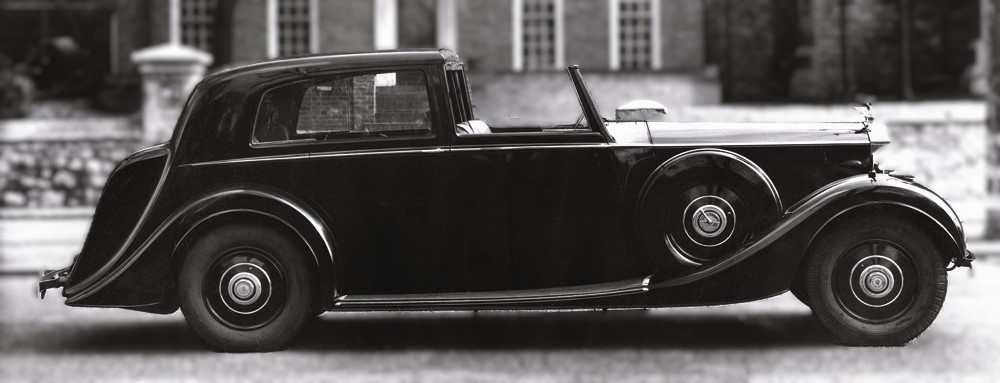
The Rolls-Royce Phantom III was the final large pre-war Rolls-Royce. Introduced in 1936, it replaced the Phantom II and it was the only V12 Rolls-Royce until the 1998. Only the chassis and mechanical parts were made by Rolls-Royce. Car bodies were constructed and fitted by coachbuilders selected by owners or dealers, who might have cars built for showroom stock. Some of the most famous coachbuilders who produced bodies for Rolls-Royce cars are Barker, Park Ward, Mulliner, Hooper and Thrupp & Maberly. Body types as well as limousines included saloons, coupés, and convertibles
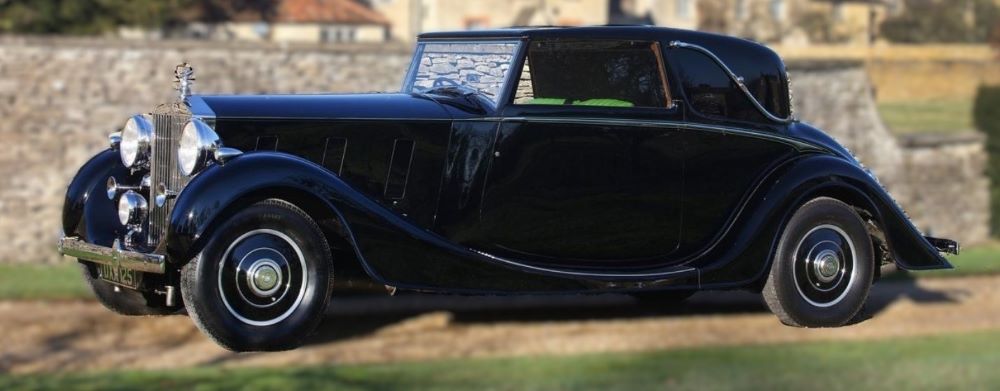
1933 Phantom Ill (3BT103)
This rare two-door sedanca coupé was coachbuilt by HJ Mulliner for Apsley Cherry-Garrard, one of the surviving members of Captain Scott’s last, fateful expedition to the South Pole in 1912. The car was originally finished in Primrose Yellow with a dyed Vaulmol leather interior; in the late 1940s it was repainted in black.
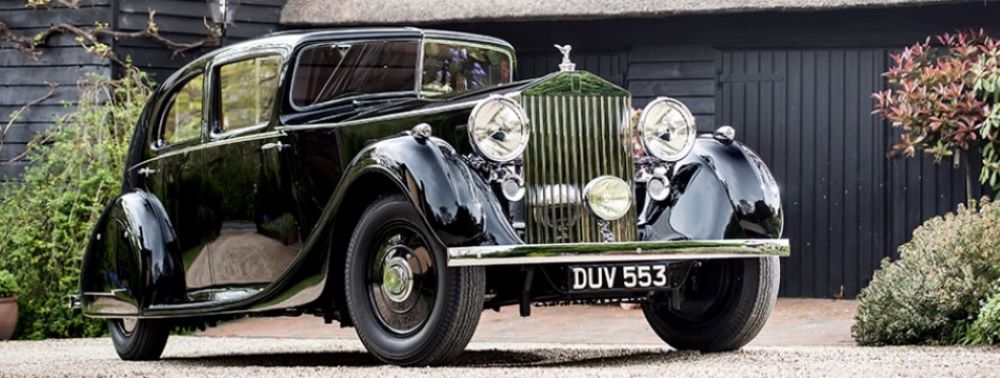
During World War Two, the Field Marshal had the use of three Rolls-Royce Phantom IIIs. The first of the Phantoms, a 1936 model coachbuilt by Freestone & Webb, was owned by the head of English Talbot Motor Company, Frederick Wilcock, before being requisitioned by the Ministry of War Transport Section. Montgomery used it as his personal transport in the run up to D-Day, and ferried Winston Churchill, General Eisenhower and King George VI to D-Day planning sessions at his base in Southwick House, Hampshire.
A keen believer in the power of the image, Montgomery used his Rolls-Royce Phantom to communicate permanence, solidity and reliability – a signal to his men that he was there to stay.
But it is the ‘Butler’ Phantom III, which will be present at the Exhibition in London, which proved to be Montgomery’s favourite. This particular Phantom was commissioned for Alan Samuel Butler, Chairman of the De Havilland Aircraft Company, with bodywork by HJ Mulliner of Chiswick. Its most striking feature was a front-sloping windscreen that made the car 15 per cent more aerodynamically efficient than the standard configuration. The motor car’s slippery nature was also helped by the enclosed spare tyre and swept tail.
The ‘Butler’ Phantom III was Montgomery’s main official mode of transport for many years visiting such eminent addresses as 10 Downing Street, the War Office on Whitehall, the British Prime Minister’s country residence Chequers, and military operations centres such as Northwood in Hertfordshire and the NATO Supreme Headquarters Allied Powers-Europe in Rocquencourt, near Versailles, France.
The Field Marshal kept the ‘Butler’ Phantom until 1962, by which time it had also carried the Prime Ministers of Canada, Australia and New Zealand, as well as taking Monty around the UK to historic meetings, inspections and celebrations. The ‘Butler’ Phantom III has recently undergone extensive refurbishment at Rolls-Royce specialist P&A Wood in Essex, England.
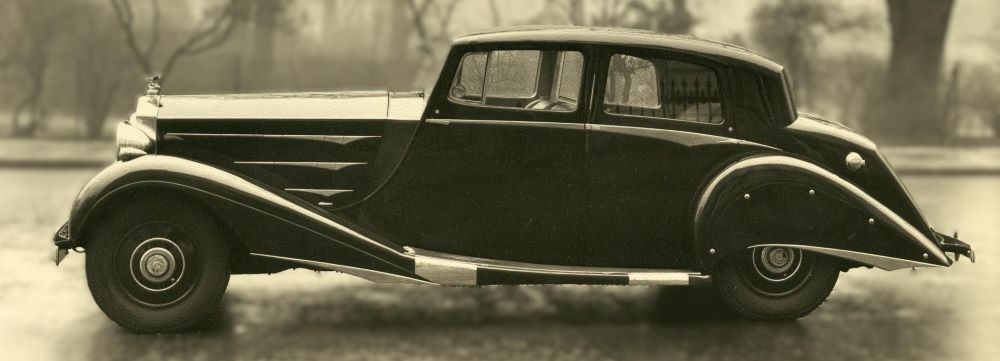
1937 Phantom III (3BT85)
London coachbuilder Hooper & Co built several bodies in this striking saloon-with-division style, which looks fast even when standing still thanks to its semi-razor edge styling and swooping curves. The art-deco chrome-plated flashes to the body and wings simply enhance the sense of kinetic energy

You must be logged in to post a comment.